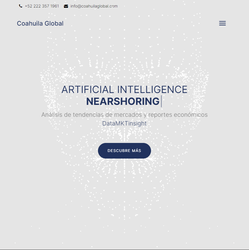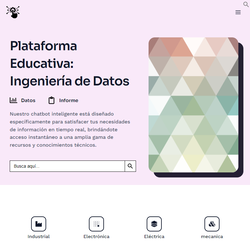
AI in everyday life
Today, Artificial Intelligence (AI) has become a key technology in multiple sectors, facilitating processes and optimizing data use. Among the main AI applications, the following tools and methodologies stand out:
Chatbots and Conversational Interfaces
Chatbots are programs designed to simulate human conversations and provide real-time assistance. They rely on natural language processing (NLP) algorithms to interpret questions and generate coherent responses. These tools are used in customer service, technical support, and the automation of repetitive tasks.
Image Recognition
Image recognition uses neural networks and computer vision to analyze and classify visual elements. It is used in various fields such as:
-
Security: Facial identification and anomaly detection.
-
Health: Disease diagnosis through medical image analysis.
-
Industry: Quality control in manufacturing processes.
Predictive Models
Predictive models use AI to analyze historical data and predict future events. They are essential in areas such as:
-
Finance: Predicting credit risks and market fluctuations.
-
Marketing: Anticipating consumer trends.
-
Health: Early detection of diseases based on patterns in clinical data.
Machine Learning Algorithms
Machine learning allows systems to improve their performance without needing to be explicitly programmed. Some of its applications include:
-
Personalized recommendations: Streaming and e-commerce platforms.
-
Process automation: Production optimization and inventory management.
-
Big data analytics: Extracting relevant information from large volumes of data.
Natural Language Processing (NLP)
NLP enables machines to understand, interpret, and generate text naturally. It is used in:
-
Virtual assistants: Such as Siri, Alexa, and Google Assistant.
-
Machine translation: Google Translate and DeepL.
-
Sentiment analysis: Evaluating opinions on social media and surveys.
Speech recognition
This technology converts voice into text, facilitating interaction with digital systems. It is key in:
-
Voice Assistants: Voice dictation and spoken commands.
-
Accessibility: Tools for people with disabilities.
-
Call Center Automation: Interactive Voice Response (IVR) systems.
Automatic Classifiers
Classifiers organize and categorize data based on detected patterns. They are used in:
-
Spam filtering: Identifying unwanted emails.
-
Medical diagnosis: Detecting diseases based on symptoms and medical tests.
-
Content analysis: Moderating comments on social media.
Impact and Future of AI
The expansion of AI is transforming industries, streamlining processes, and improving the user experience. However, it also poses challenges such as data privacy, ethics in algorithm development, and the need for appropriate regulations. As this technology continues to advance, it is crucial to ensure responsible and equitable use to maximize its benefits.



